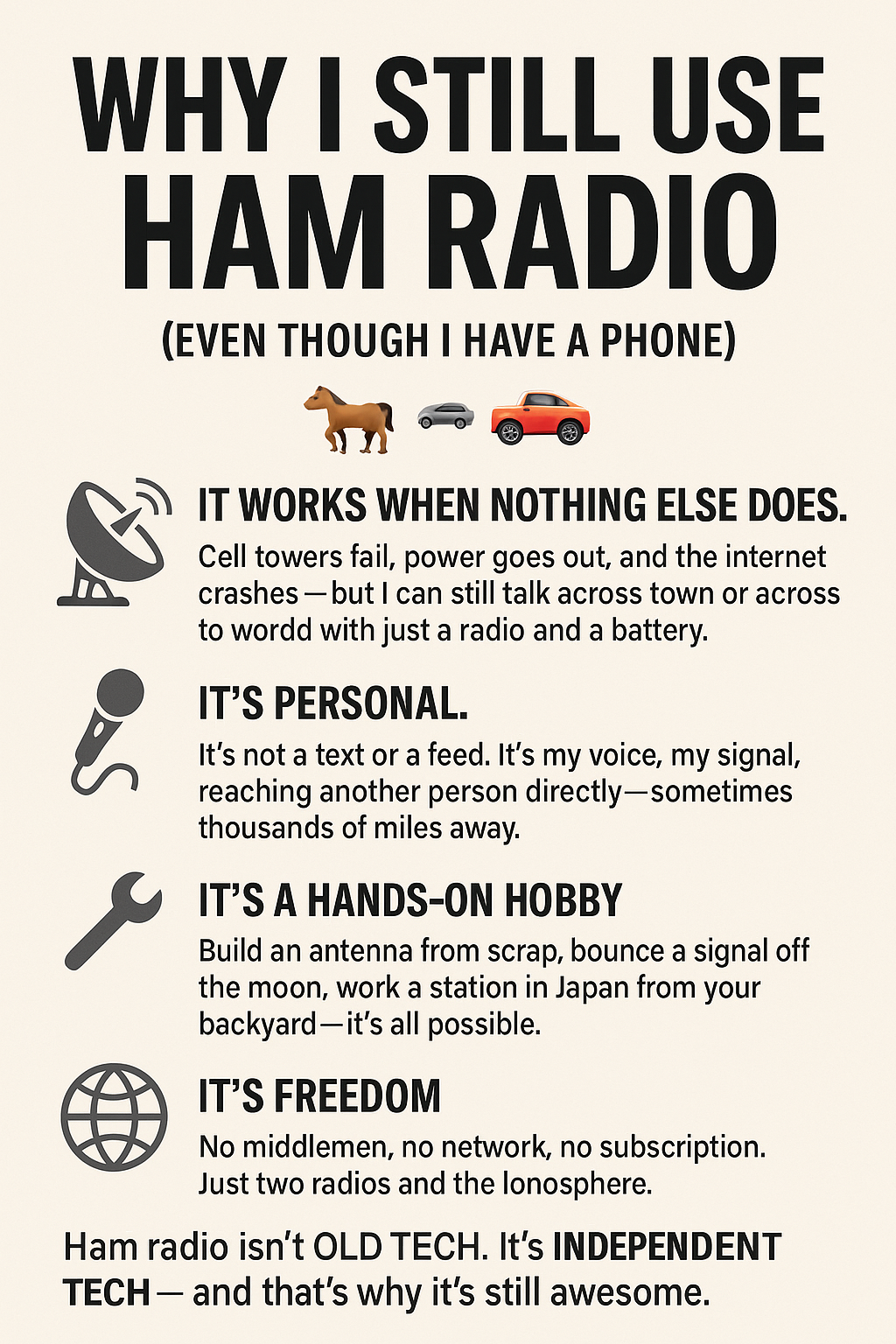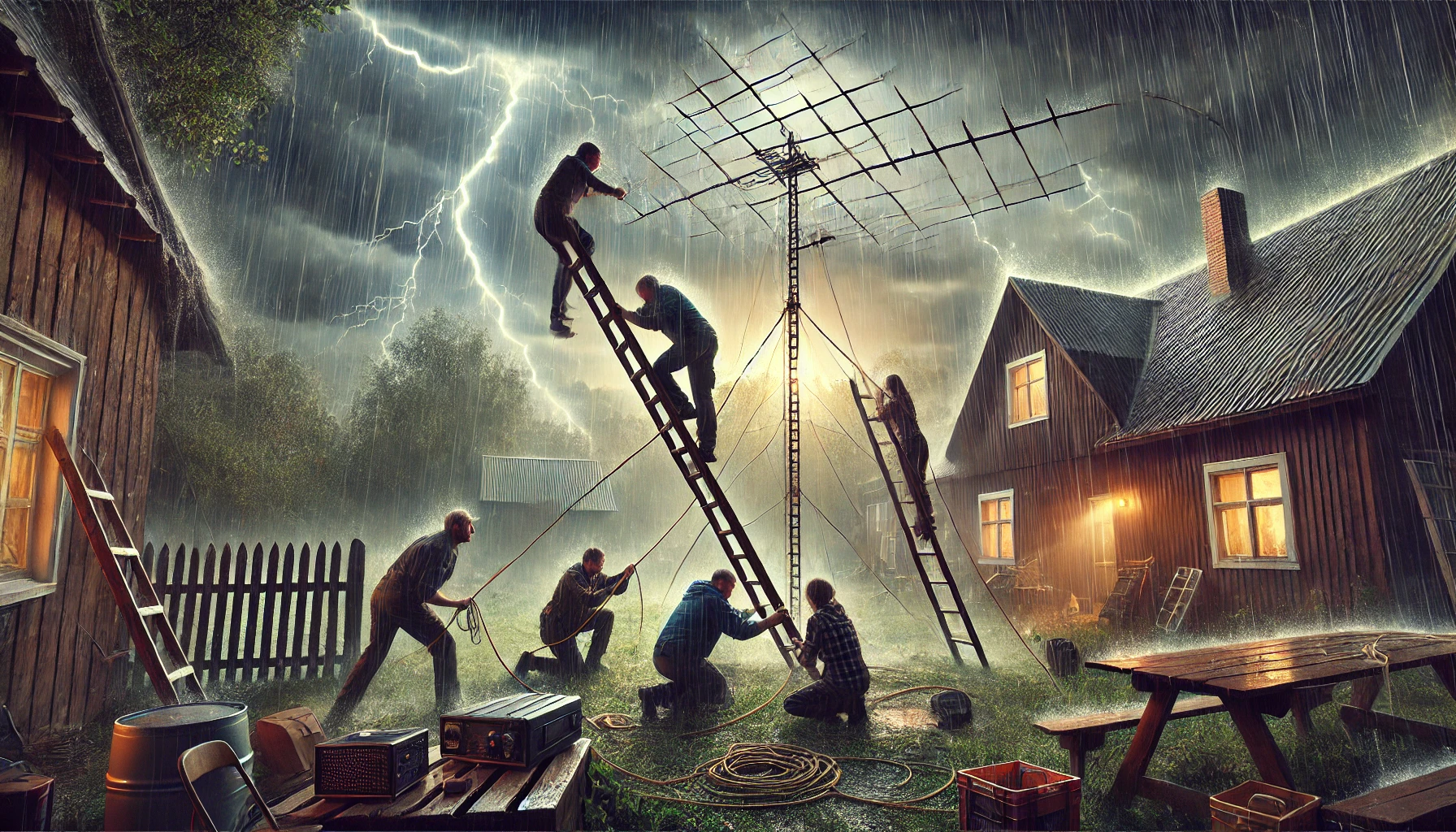Let’s be honest to someone outside the hobby, ham radio can seem like a relic from another era.
Why fuss with antennas, coax, and call signs when you can pick up a smartphone and reach anyone instantly?
It’s the same question people ask about horses: “Cars are faster, so why ride a horse?” The answer is simple … …because it’s not just about getting from point A to point B. It’s about the experience, the skills, and the freedom that modern alternatives can’t fully replace.
Here’s why ham radio still matters in 2025 and beyond.
1. When the Grid Goes Down, the Radio Still Works
Your phone is useless without cell towers, and the internet doesn’t survive long without power.
Ham radio? As long as you have a battery or generator, you can make contacts — across town, across the country, or across the world.
During disasters like hurricanes, wildfires, and earthquakes, amateur radio often becomes the only working communication link.
It’s not just “survivalist fantasy” — emergency agencies actively rely on trained amateur operators when infrastructure fails.
2. It’s More Personal Than a Text Message
Ham radio conversations — whether over HF on a lazy Sunday afternoon or on a local 2-meter repeater — have a human element that texting doesn’t capture.
There’s no typing, no algorithm deciding who sees what.
It’s your voice, your signal, bouncing off the ionosphere, carrying your words directly to someone else’s ears.
That kind of connection is rare these days.
3. It’s a Technical Playground
Some people are into photography. Some rebuild classic cars. Hams? We tinker with radios, antennas, and propagation.
- Want to build an antenna from scrap wire and work Europe from your backyard? Done.
- Curious about bouncing a signal off the moon? That’s called EME (Earth–Moon–Earth), and yes, it’s possible.
- Want to try digital modes like FT8 or FT4 and trade signal reports with stations you can’t even hear? Absolutely.
Ham radio is one of the few hobbies where you can experiment with real-world electronics, physics, and RF theory — and use it in a way that’s fun and practical.
4. It’s Global Without Being Dependent
Every internet connection passes through someone else’s network. Every phone call goes through a carrier.
Ham radio? It’s peer-to-peer in the purest sense — just two radios talking directly, sometimes thousands of miles apart, without an intermediary.
If you’ve ever had an HF QSO where you’re hearing a faint signal from halfway across the globe — knowing it’s your antenna, your radio, and a bit of ionospheric magic making it happen — you’ll understand the appeal instantly.
5. It’s Adventure and Community Rolled Into One
Portable operations like POTA (Parks on the Air) or SOTA (Summits on the Air) mix hiking, camping, and radio in a way that feels like treasure hunting.
You head into the field, set up a portable station, and “hunt” or “activate” locations, making contacts with others around the world.
And the community? Huge. Hams love helping each other — whether it’s troubleshooting a tricky antenna, loaning gear for a special event, or just chatting on a net.
6. It’s the Horse and the Car
Smartphones are amazing, but they’re part of a huge, fragile infrastructure.
Ham radio is self-reliant, adaptable, and works where modern systems don’t.
The point isn’t to replace one with the other — it’s that each has a role.
People still ride horses not because they have to, but because it’s a skill, a tradition, and an experience you can’t get from driving a car.
Ham radio is the same way — it’s part technology, part heritage, and all about the human connection.
Final Thought
Ham radio isn’t about nostalgia for “the old way of doing things.” It’s about keeping a skill alive that’s useful, fun, and uniquely human.
In a world where communication is often invisible and automated, there’s something deeply satisfying about spinning a dial, hearing a voice fade in from the noise, and knowing you just reached out across the world with nothing but a radio, a wire, and a bit of know-how.
Or, to put it simply: it’s the thrill of riding the ionospheric wave — no saddle required.



